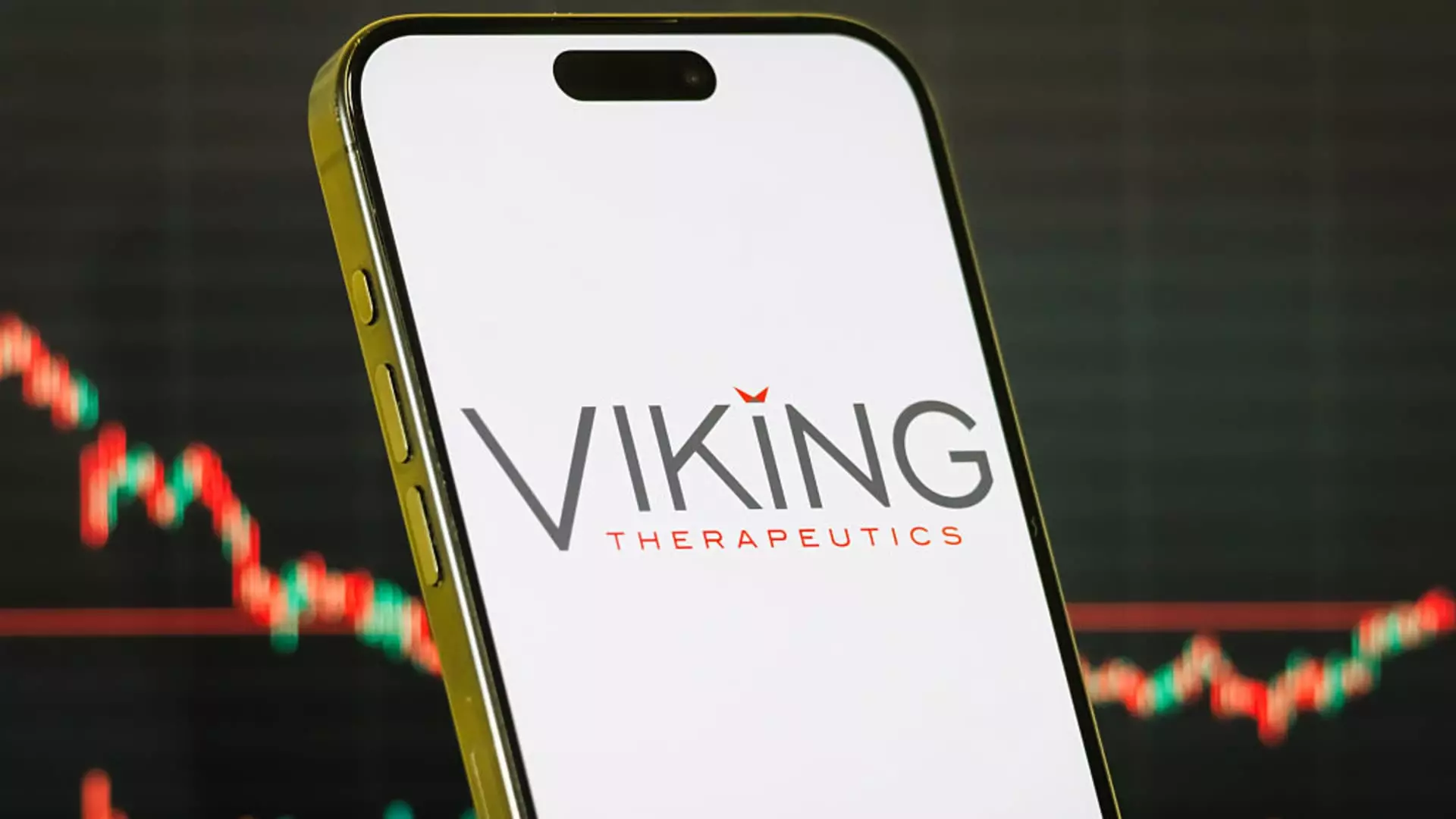Viking Therapeutics’ abrupt stock collapse following their mid-stage trial results exemplifies the peril of overenthusiasm in the biotech sector. Once hailed as a potential leader in the lucrative obesity treatment market, the company’s failure to deliver compelling data exposes the fragile nature of hype-driven valuations. Investors, seduced by the prospect of a novel oral pill challenging entrenched giants, now face the bitter truth: innovation alone is insufficient without validated efficacy and tolerable safety profiles. The stark decrease in shares — plummeting nearly 43% — underscores a crucial lesson: in the high-stakes world of pharmaceutical development, surface-level optimism cannot mask fundamental flaws.
The Illusion of a Breakthrough Drug
Viking’s claims of weight loss up to 12.2% over three months, though seemingly promising, unravel when scrutinized against the backdrop of existing treatments. Notably, Eli Lilly’s oral counterpart, for example, has demonstrated comparable or superior weight loss results over a longer 72-week period, with fewer discontinuations and more manageable side effects. The contrast reveals how Viking’s data, on closer examination, appears unimpressive—especially given the high dropout rate and adverse gastrointestinal effects. These side effects—nausea and vomiting—that plagued Viking’s trial, particularly during the initial phases, are problematic. They threaten user adherence and diminish the pill’s practical appeal, as tolerability remains paramount in chronic weight management.
Market Dynamics and the Power Balance
The landscape of obesity treatment is dominated by pharmaceutical behemoths like Eli Lilly and Novo Nordisk, whose extensive resources and proven pipeline give them a significant competitive edge. Viking’s stumble is emblematic of the risks faced by smaller biotech firms in such a crowded and fiercely competitive space. The fact that innovative contenders must outperform entrenched players on multiple metrics—efficacy, safety, patient retention—raises questions about the viability of a rapid catch-up. The dominance of these pharmaceutical giants is reinforced by their longer-term, comprehensive trials that make Viking’s shorter studies look somewhat superficial, leaving little room for smaller companies to carve out a meaningful niche.
The Promise and Pitfalls of Gut Hormone Targeting
Viking’s approach hinges on mimicking gut hormones GLP-1 and GIP, a strategy that holds scientific merit but has yet to deliver universally acceptable solutions. While targeting hormones that modulate appetite and metabolism is a rational strategy, the execution, as Viking demonstrates, can be riddled with challenges. Side effects seem to overshadow benefits in their short-term data, raising doubts about whether the mechanism can achieve widespread market acceptance. The fact that existing drugs targeting GLP-1 are already well established, with proven tolerability, further diminishes Viking’s chances unless they can significantly outperform or offer distinct advantages.
The Larger Reality for Investors and the Market
This episode begs a broader reflection: the obesity drug market, while lucrative, is not an easy arena for new entrants to disrupt existing giants. Investors must approach promising early data with skepticism, understanding that the pathway from promising trial results to commercial success is laden with pitfalls. Viking’s abrupt decline underscores that even promising science can falter if it does not translate into meaningful, manageable clinical benefits. It also emphasizes that the race in obesity treatment is not just about innovative science but about consistent, scalable, and tolerable solutions that can win patient trust over the long haul.
A Cautionary Tale for the Center-Left Perspective
From a center-wing liberal standpoint, the Viking story highlights the importance of balancing scientific innovation with ethical and practical considerations—particularly patient safety and equitable access. While the market is eager for new obesity solutions, the rush to develop pills must not override the fundamental need for safe, tolerable, and effective treatments. The high discontinuation rate and adverse effects point to a broader issue: innovation should be tempered with responsibility. It’s a stark reminder that chasing headline-grabbing breakthroughs without thorough validation can divert resources and attention from more sustainable, holistic health approaches—like lifestyle interventions and preventative care—that might serve communities better in the long run. The biotech sector’s penchant for chasing fleeting wins must be matched with a commitment to integrity, patient well-being, and equitable healthcare progress.


Leave a Reply